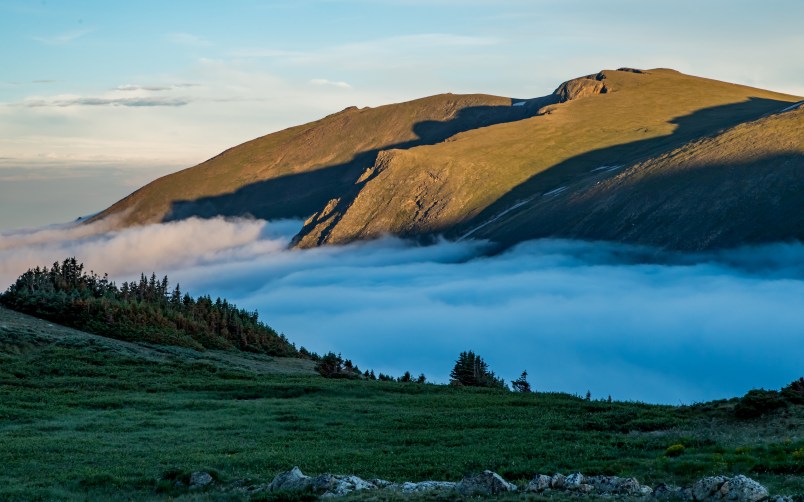 This article is part of TPM Cafe, TPM’s home for opinion and news analysis.
This article is part of TPM Cafe, TPM’s home for opinion and news analysis.
When I was a young engineer, I took a break to teach science in an elementary school. I taught third graders about climate change, and we discussed sea level rise, among other issues. The degree to which some students absorbed the harsh realities of the climate crisis, how terrified some were of the rising tides, raging fires, hotter summers and wetter winters was unsettling. They didn’t see climate change as something to anticipate at some unknown time in the future, but instead something to be feared right now.
Today, it’s becoming harder to avoid the devastating effects climate change is having on our planet, and we’re starting to view this crisis as those third graders did.
National parks are at the forefront of the climate crisis in our country, from melting glaciers to record flooding to disastrous wildfires. These regions offer an early view of climate change’s devastating impact on our land. According to a recent study by the National Parks Conservation Association, 80 percent of our more than 400 national parks are experiencing changes in climate through extreme trends in temperature, precipitation, or early onset of spring. In fact, temperatures in national parks are warming twice as fast as in the rest of the country, causing harm to irreplaceable park resources.
We’re seeing unprecedented erosion of the historic Nisqually Road at Mount Rainier, the pika in Rocky Mountain National Park forced to seek higher elevations, and Joshua trees pushed out of their namesake park. Intensifying storms and rising water temperatures are affecting sea turtles and their nests along coastal parks, including in the Everglades National Park and along Cape Hatteras National Seashore. The loss of these essential ecological functions is destroying what national parks are intended to preserve: nature, history and culture.
Air pollution levels in some of our most iconic national parks, like Acadia in Maine and Great Smoky Mountains in Tennessee, are comparable to, and at times even higher than, levels in densely populated cities like Los Angeles and Houston. The effects of air pollution on our national parks are even more widespread and distressing than previously thought, as nearly every single one of our more than 400 national parks is plagued by air pollution problems. Eighty-five percent of our parks have air that is unhealthy to breathe at times, and on average, park visitors miss out on 50 miles of scenery because of air pollution—a distance equivalent to the length of Rhode Island. On top of that, in 88 percent of parks, air pollution seeps into soils and waters.
These alarming changes impact recreation enthusiasts and local business owners.Park visitation drops by at least eight percent when air pollution is high — harming local economies and keeping tourists from enjoying our national parks.
At a time when the climate crisis facing the planet is irrefutable, the laws that protect our environment are being challenged like never before, as this administration continues to prioritize polluters’ interests over our health and public lands. From gutting air and climate regulations to eliminating environmental protections for our public lands and communities, the magnitude and speed at which the administration is working to rollback air, water and wildlife safeguards is unprecedented and potentially irreversible.
There are some small actions individuals can take. Whether it’s taking a shuttle on Glacier’s Going to the Sun road or packing out trash at Denali National Park to reduce your impact, park visitors have opportunities to engage in the fight against climate change now. We must also strive to protect our parks by advocating for stricter carbon emissions standards and helping parks enhance their ecological resilience.
Protecting and preserving national parks is key to combating the climate crises. These treasured places not only tell the stories of our nation’s diverse history and provide unforgettable experiences, but they are also critical to protecting the clean air we breathe and water we drink. Given what our nation stands to lose if climate change continues to wreak havoc on our parks and people at this rate, we must act now.
This story is part of Covering Climate Now, a global collaboration of more than 250 news outlets to strengthen coverage of the climate story.
Ani Kame’enui is the deputy vice president of government affairs for the National Parks Conservation Association.







Trump smiles.
Now there is no reason not to open his National Parks to fracking, mining, clear cutting forests and more.
Fifty years from now, people are going to look back at this time and have a lot to say about the inaction of their predecessors. We still have time to make a difference and save the environment for humanity, once we get past a certain point the changes are dialed in and we’re stuck unless someone has a really bright idea on how to stop the atmosphere’s chemistry from mangling human society.
On a related note, climate change is already impacting US agriculture, but you’ll never hear that from this administration.
The WH is deliberately sidelining the results of dozens of USDA research studies showing how ag, particularly Southern ag, is already being hit by climate change.
And, Donnie is getting ‘oranger,’ but he really doesn’t care…
Since climate change progresses unevenly across the planet, some changes in some areas are already dialed in. For example, a big deal was made about keeping temperature changes to less than 2 degrees Celsius over pre-industrial levels. It turns out roughly 10pct of the US population lives in counties that have exceeded that threshold.